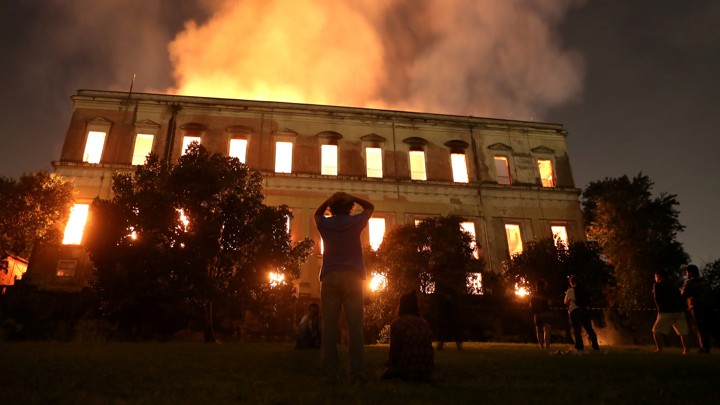Brazil’s Museum Fire: 200 Years of Work Lost - The Atlantic

"The museum’s archeological collection had frescoes from Pompeii, and hundreds of Egyptian artifacts, including a 2,700-year-old painted sarcophagus. It housed art and ceramics from indigenous Brazilian cultures, some of whose populations number only in their thousands. It contained audio recordings of indigenous languages, some of which are no longer spoken; entire tongues went up in flames. It carried about 1,800 South American artifacts that dated back to precolonial times, including urns, statues, weapons, and a Chilean mummy that was at least 3,500 years old.
Older still was the museum’s rich trove of fossils, from crocodile relatives like Pepesuchus to one of the oldest relatives of today’s scorpions. It harbored some of the oldest human remains in the Americas: the 11,500-year-old skull and pelvis of a woman who was unearthed in 1975 and nicknamed Luzia
Many of these presumably lost specimens were holotypes—the first, best, and most important examples of their kind. Every specimen is arguably irreplaceable, but holotypes are especially so. Losing them is like losing the avatar of an entire species. Some of these specimens have been drawn and described in the scientific literature, but that information is often patchy, which is why scientists frequently return to holotypes to study them with their own eyes."
read the newstory by Ed Yong


